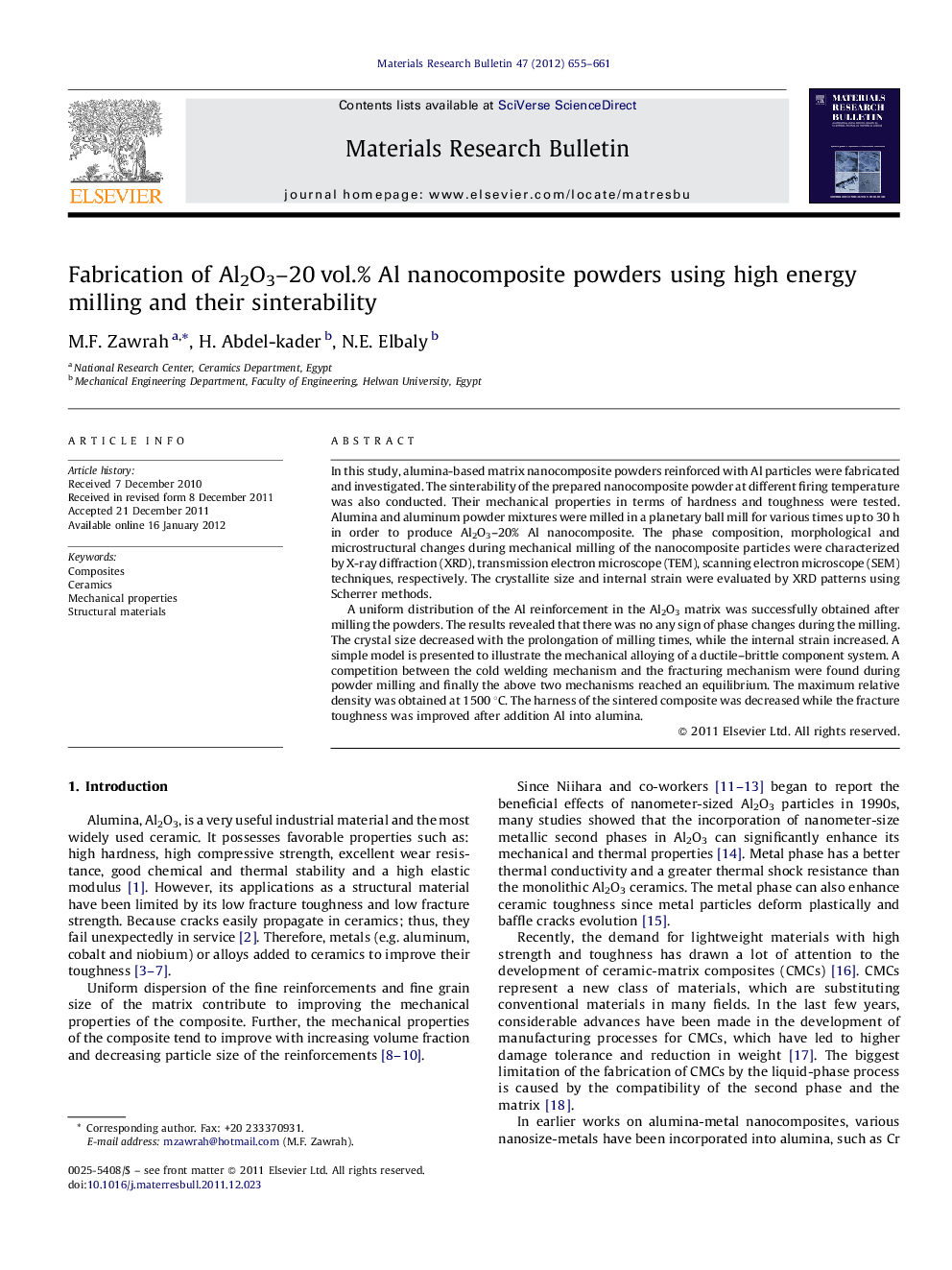| Article ID | Journal | Published Year | Pages | File Type |
|---|---|---|---|---|
| 1489129 | Materials Research Bulletin | 2012 | 7 Pages |
In this study, alumina-based matrix nanocomposite powders reinforced with Al particles were fabricated and investigated. The sinterability of the prepared nanocomposite powder at different firing temperature was also conducted. Their mechanical properties in terms of hardness and toughness were tested. Alumina and aluminum powder mixtures were milled in a planetary ball mill for various times up to 30 h in order to produce Al2O3–20% Al nanocomposite. The phase composition, morphological and microstructural changes during mechanical milling of the nanocomposite particles were characterized by X-ray diffraction (XRD), transmission electron microscope (TEM), scanning electron microscope (SEM) techniques, respectively. The crystallite size and internal strain were evaluated by XRD patterns using Scherrer methods.A uniform distribution of the Al reinforcement in the Al2O3 matrix was successfully obtained after milling the powders. The results revealed that there was no any sign of phase changes during the milling. The crystal size decreased with the prolongation of milling times, while the internal strain increased. A simple model is presented to illustrate the mechanical alloying of a ductile–brittle component system. A competition between the cold welding mechanism and the fracturing mechanism were found during powder milling and finally the above two mechanisms reached an equilibrium. The maximum relative density was obtained at 1500 °C. The harness of the sintered composite was decreased while the fracture toughness was improved after addition Al into alumina.
Graphical abstractFigure optionsDownload full-size imageDownload as PowerPoint slideHighlights► Al2O3/Al nanocomposite powders were prepared via high energy ball milling. After 20 h milling, the size of Al2O3–20 vol.% Al nanocomposite particles was in the range of 23–29 nm. A uniform distribution of nanosized Al reinforcement throughout the Al2O3 matrix, coating the particles was successfully obtained. ► There was no any sign of phase changes during the milling. A competition between the cold welding mechanism and the fracturing mechanism were found during milling and finally the above two mechanisms reached an equilibrium. ► The highest value of relative density was obtained for the sintered bodies at 1500 °C. ► The harness of the sintered composite was decreased while the fracture toughness was improved after addition Al into alumina.
